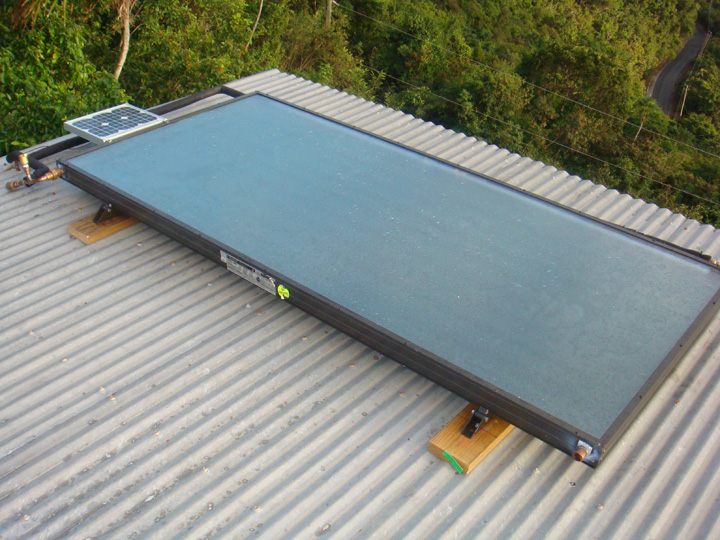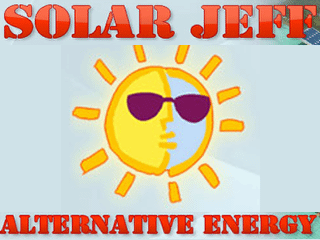Domestic Hot Water Solar Systems:
Solar water-heating provides the best return on investment of any alternative energy option. Operating a 240 Volt water-heater is a very inefficient use of electricity. With our abundance of sunlight here in the Tropics, solar thermal collection is the logical choice. As much as 20% of a typical residential electric bill can be saved in this way. The best solar water-heater is a PV-powered, open-loop circulation system. Water stored in a tank in the pump-room is passed through a thermal collector panel on the roof by means of a low-voltage circulation pump.
 Hot Water Systems
Hot Water Systems
Pool Pumping Solar Systems:
The second best return on investment is realized by the installation of a PV-powered pool circulation pump. Depending on the size of the pool, an array of a number of PV panels creates DC electricity that is fed through a control module to a DC pump. When the sun shines the pump runs. This “direct drive” operation requires no batteries or inverter. Of course, it doesn’t work when the sun is not shining. For that reason, we leave the existing AC-powered 240 Volt pump in place for backup.
Pool Heating Solar Systems:
Even in Florida many people find the water in their pool too cold during the winter months. The use of a gas- or electric-powered pool heater can run as much as $500 per month. For the cost of one season’s conventional heating we can install a solar pool-heating system. The thermal collection panels for this type of system are plumbed right into the filtration loop. The same pump that circulates the water through the filter is utilized. An automatic diverter valve sends the water through the panels when an increase in temperature is desired. A thermostatic controller regulates the valve. The collector array for a pool-heating system is generally 75-100% of the area of the pool. If roof space is limited, or the pool isn’t near a roof, the array can be placed on a ground-mounted rack.
Photo Voltaic Electric Solar Systems:
Generally stated, the sun’s power bombards our planet every day. Even on cloudy days photons of solar energy reach earth. PHOTO VOLTAICS is the way we capture that energy and turn it into electricity. A PV panel is a passive collector. It just sits there doing its job as long as sunlight reaches it. The DC (direct current) electric power generated by a PV panel can be stored in batteries or converted to AC (alternating current) for immediate use. Some devices, like special pool circulation pumps, can run on DC power without conversion. We call that “direct drive”.
Net Metering Solar Systems:
“Net-metering” is the term given to a photo voltaic solar array that is “grid tied” to the local utility service. A special digital reversing meter is installed by WAPA. When your solar panels are making more power than you’re consuming, the meter runs backwards. When you’re consuming more that you’re producing, it runs forward. Your bill reflects the net amount of power used. A grid-tied system is a simple enough thing, but it requires an electrical permit, application to WAPA and a substantial capital outlay for equipment. An ENERGY AUDIT should be conducted to establish your energy demand . A year’s electric bills should be reviewed to determine consumption over an average annual period. Think of a net-metering system as an ENERGY BANK. During low-demand months (January, for instance) the ideally designed system would produce more power than consumed. That would create ENERGY CREDITS that would be redeemed during high-demand months like August. Under the WAPA program, unused credits expire at the end of the calender year.
